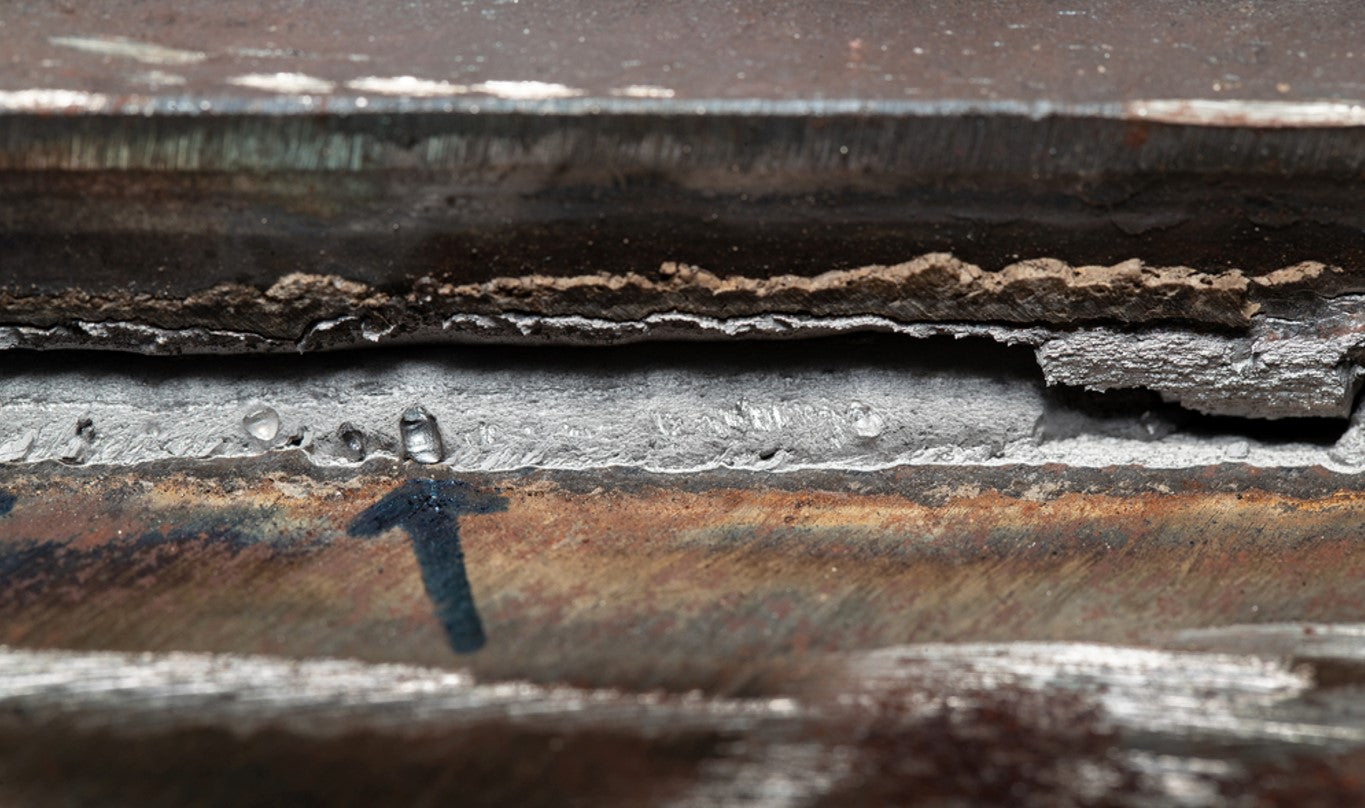Preventing Weld Undercut Demystified: Strategies for Success
Preventing Weld Undercut Demystified: Strategies for Success
Blog Article
Recognizing the Causes and Solutions for Undercut Welding in Metal Fabrication Processes
In the world of steel construction processes, the event of undercut welding poses a significant challenge that requires a detailed understanding of its causes and sensible remedies. The detailed interaction of various factors during welding operations can cause this unfavorable phenomenon, influencing the structural honesty and total high quality of the bonded joints - Preventing weld undercut. By exploring the root creates of undercut welding and exploring reliable therapeutic actions, producers can boost the requirement of their craftsmanship and guarantee the manufacturing of remarkable metal elements
Typical Sources Of Undercut Welding
Often ignored in steel manufacture, undercut welding takes place due to numerous variables that require careful attention and know-how to be effectively alleviated. In addition, incorrect welding methods, such as making use of the wrong welding angle or travel speed, can also contribute to damage formation. The selection of welding specifications, such as voltage, current, and cord feed rate, plays a significant role in the incident of undercut welding.
Effect of Incorrect Welding Parameters
Incorrect welding specifications can dramatically endanger the stability and high quality of bonded joints in steel manufacture processes. The effect of incorrect welding specifications manifests in various means, resulting in architectural weaknesses and problems in the bonded components. One essential facet affected by improper welding specifications is the penetration deepness of the weld. Not enough warmth input as a result of low welding currents or excessively high travel rates can lead to inadequate blend between the base steels, resulting in incomplete joint infiltration and weakened bonds. Conversely, too much heat input brought on by high welding currents or sluggish traveling speeds can lead to burn-through and too much support, creating a weak and unstable weld structure. Additionally, wrong criteria such as improper voltage settings or incorrect electrode angles can contribute to irregular weld bead accounts, absence of blend, and increased possibilities of problems like undercutting. For that reason, thorough attention to welding criteria is critical to make certain the production of high-quality welds with the wanted mechanical buildings and architectural integrity.
Effect of Improper Lantern Angle
Improper torch angle in welding operations can considerably affect the top quality and stability of the last weld joints in steel construction processes. The torch angle plays a critical role in determining the warm input and distribution throughout welding. When the lantern angle is inaccurate, problems such as undercutting can develop. Damaging is an usual welding flaw where a groove develops along the weld toe, deteriorating the joint and jeopardizing its structural integrity.
A lantern angle that is as well steep can bring about insufficient infiltration, incomplete combination, and enhanced spatter. On the other hand, a lantern angle that is also superficial can result in extreme infiltration, burn-through, and distortion see this page of the base material. Preventing weld undercut. Correct lantern angle is important for ensuring regular weld high quality, strength, and appearance
To protect against undercutting and various other problems triggered by inappropriate lantern angles, welders should be trained to maintain the appropriate torch angle throughout the welding process. Routine monitoring and modification of lantern angles during welding can aid achieve sound welds with very little flaws.
Duty of Inadequate Welding Strategies

An additional aspect of inadequate welding strategies is improper weld prep work. Poor cleansing of the base steels, wrong joint style, or insufficient edge prep work can all contribute to undercut welding. Insufficient why not check here securing gas insurance coverage or using the incorrect type of gas can result in insufficient blend and the development of undercut problems.
To like it resolve the function of poor welding techniques in metal fabrication procedures, it is necessary to provide comprehensive training for welders. Correct education and learning on welding specifications, joint preparation, and securing gas selection can help prevent undercut welding and make certain top quality welds in steel fabrication tasks.
Reliable Solutions for Undercut Welding
Addressing undercut welding in steel fabrication requires applying effective remedies to improve weld top quality and structural honesty. One of the key solutions to deal with undercut is to change welding specifications such as voltage, current, and travel rate to make certain correct warmth input and combination. By fine-tuning these setups, welders can prevent too much melting of the base metal and filler material, minimizing the possibility of undercut development.
In addition, appropriate joint prep work is important in avoiding undercut. Guaranteeing clean base steel surfaces devoid of contaminants and utilizing the proper bevel angle can assist promote much better weld penetration and minimize the danger of undercut - Preventing weld undercut. Employing suitable welding strategies, such as weaving or oscillating the lantern, can additionally assist in distributing heat uniformly and loading the weld joint effectively, minimizing the possibility of undercut problems
Additionally, choosing the proper welding consumables, including electrodes and filler metals, is essential in mitigating undercut. Making use of materials with appropriate chemical compositions and mechanical buildings can add to attaining sound welds with very little undercut. Regular evaluation and quality assurance actions should likewise be executed to discover and deal with undercut problems quickly, making certain the overall integrity of fabricated steel parts.

Final Thought
Finally, understanding the reasons and services for undercut welding in metal construction processes is critical for achieving high-quality welds. By dealing with common causes such as wrong welding criteria, improper lantern angle, and poor welding methods, welders can prevent undercutting and guarantee solid, sturdy welds. It is necessary to take note of these aspects and implement efficient solutions to enhance the total welding procedure and last item top quality.

Report this page